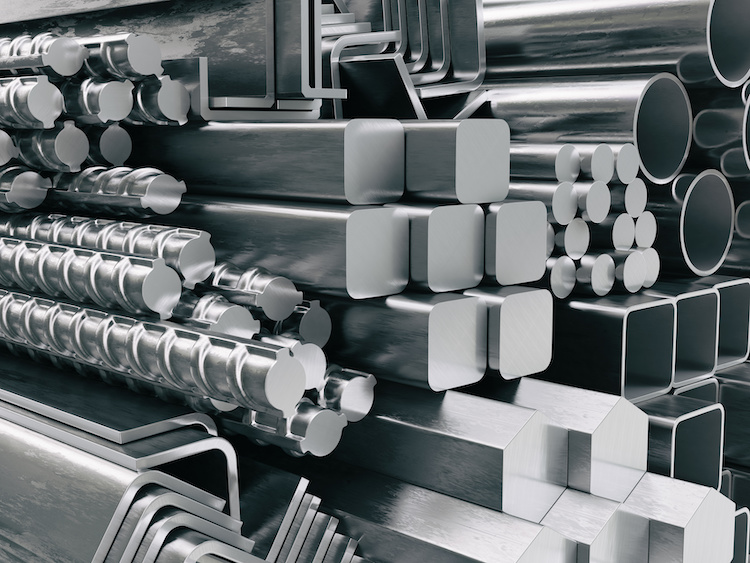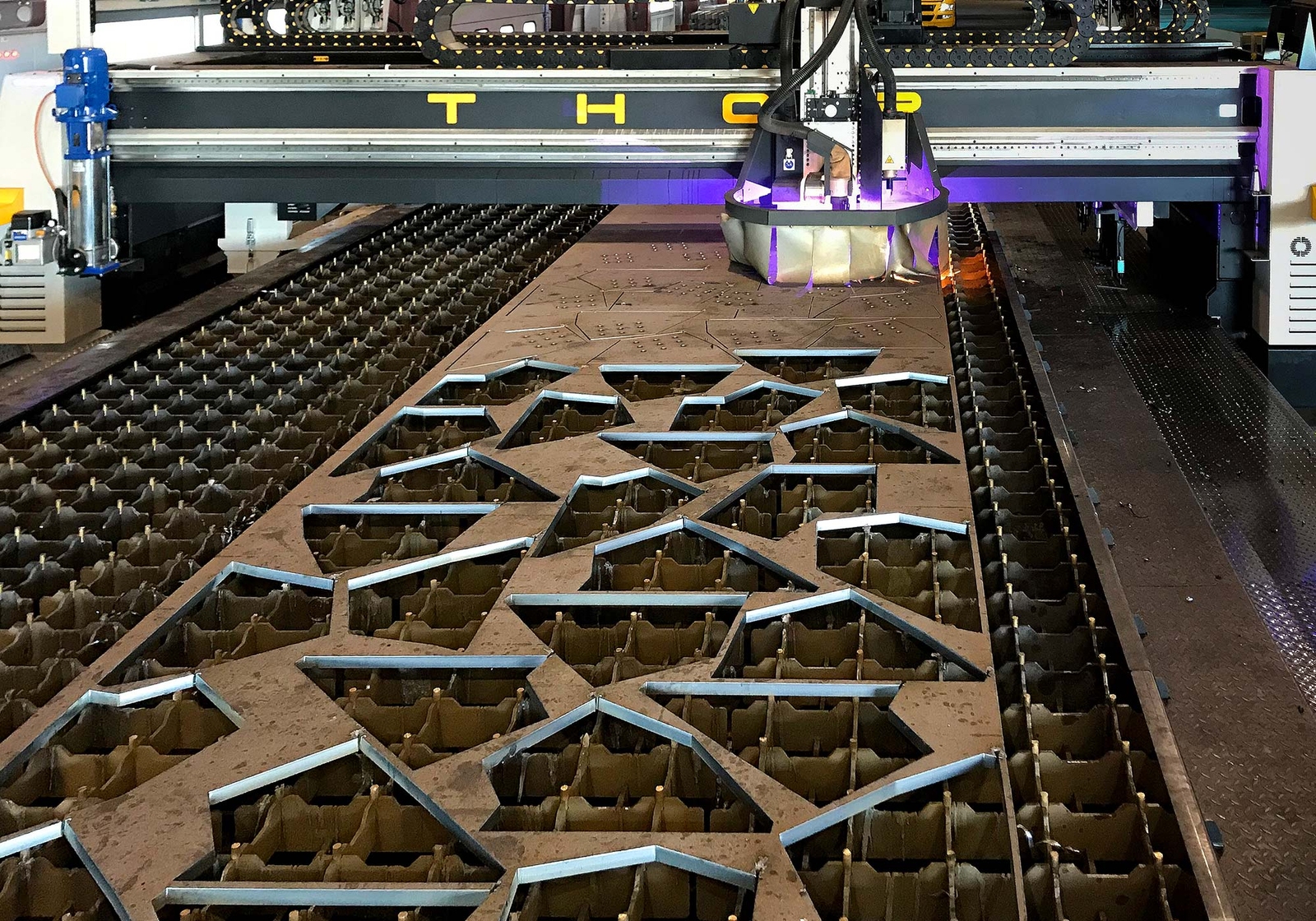Comprehensive Analysis of Cutting-Edge Techniques in Steel Manufacture Market
As the steel fabrication sector continues to evolve, the combination of cutting-edge strategies has come to be necessary for staying affordable and satisfying the needs of contemporary production requirements. From laser reducing improvements to the utilization of robotics and 3D printing in steel production, the landscape of fabrication strategies is quickly transforming. With each development bringing its very own collection of advantages and challenges, an extensive analysis of these techniques is vital for firms aiming to simplify their processes, improve accuracy, and ultimately, raise the top quality of their steel fabrication outcome. In this vibrant industry where innovation plays a crucial role, recognizing the nuances of these innovative strategies is not just a choice however a need for those looking to advance in the ever-evolving globe of steel manufacture.
Laser Cutting Improvements
In the world of steel manufacture, laser reducing innovations have actually changed the precision and efficiency of steel shaping procedures. By using the power of focused laser beam of lights, suppliers can now achieve unequaled degrees of accuracy when cutting with various sorts of steels. This modern technology makes it possible for complex styles to be performed with very little material wastage, making it an affordable solution for industries calling for high precision components.
Among the crucial benefits of laser cutting is its ability to take care of a vast variety of materials, consisting of stainless-steel, aluminum, and carbon steel, effortlessly. The process generates clean, burr-free sides, getting rid of the requirement for extra finishing actions. The non-contact nature of laser reducing decreases the threat of material contamination, resulting in greater quality end products.
Moreover, laser reducing devices can be programmed to make swift, exact cuts, substantially minimizing production time compared to standard cutting methods. This speed and accuracy make laser reducing especially suitable for automation settings where effectiveness is paramount. As modern technology continues to breakthrough, laser cutting is poised to play a significantly essential role in the steel fabrication industry.

CNC Machining Innovations
The evolution of CNC machining innovations has introduced a new period of accuracy and efficiency in the steel construction sector. Computer System Numerical Control (CNC) makers have changed steel manufacture by offering unrivaled accuracy and repeatability in the production process. steel fixing. Among the crucial innovations in CNC machining is the assimilation of innovative software application systems that enable real-time surveillance and adjustments, resulting in enhanced efficiency and quality assurance
Furthermore, the advancement of multi-axis CNC makers has enabled the manufacture of complex steel parts with intricate styles that were formerly testing to generate. These machines can do a wide variety of machining procedures, consisting of milling, boring, transforming, and grinding, all with high levels of accuracy.
In addition, the unification of automation and robotics in CNC machining has streamlined production processes, reduced preparations, and minimized the margin of mistake. This combination of innovative technologies not only boosts effectiveness but additionally ensures regular quality throughout all fabricated steel parts. Finally, CNC machining advancements remain to drive improvements in the steel construction industry, setting brand-new requirements for precision and productivity.
Automated Welding Technologies
Automated welding innovations have click here for info changed the steel construction industry, enhancing efficiency and accuracy in the welding process. These innovative modern technologies make use of computer-controlled systems to automate the welding process, bring about higher efficiency degrees and enhanced weld top quality. Among the vital benefits of automated welding is the capability to carry out complicated welds with consistent accuracy, reducing the chance of mistakes and remodel.
Robotic welding systems go to the leading edge of automated welding technologies, offering unparalleled speed and precision. These systems can handle a variety of welding jobs, from basic to elaborate, with convenience (Alpha reo). By making use of advanced sensors and software program, robotic welders can adapt to variations in material and joint geometry, making certain an uniform and reliable weld
In addition, automated welding modern technologies improve work environment security by lessening the exposure of human welders to harmful fumes and extreme warm. As the steel fabrication sector continues to progress, including automated welding modern technologies will be necessary for business looking to stay affordable and meet the expanding needs for high-quality bonded products.
Robotics Integration in Manufacture
Using robotic systems in manufacture processes has actually ended up being a critical approach for boosting effectiveness and accuracy in modern-day production environments. Robotics integration in steel construction provides a myriad of advantages, including boosted performance, improved top quality control, and enhanced precaution. These innovative robot systems are geared up with innovative sensing units and programming abilities, permitting them to perform intricate jobs with a high degree of precision and repeatability.
Among the essential advantages of robotics find out assimilation in steel manufacture is the capacity to automate repetitive tasks, such as product handling, reducing, welding, and setting up procedures. This not only speeds up production cycles but also lowers the threat of human error, causing greater overall product top quality. In addition, robots can operate 24/7, considerably improving production outcome and meeting tight task deadlines.

3D Printing in Steel Manufacturing
Having actually transformed the steel fabrication sector through robotics assimilation, the growing expedition of 3D printing in steel manufacturing is poised to more development the world of modern production methods. 3D printing, also referred to as additive manufacturing, uses unprecedented design freedom and intricacy, allowing the production of detailed steel structures that were formerly unattainable through standard production methods. By making use of computer-aided style (CAD) software, producers can specifically manage the layer-by-layer deposition of steel product, leading to parts with improved functionalities and geometries.
Among the vital benefits of 3D printing Check This Out in steel manufacturing is its capability to lower material waste significantly. Unlike subtractive production processes where excess material is trimmed away, 3D printing only makes use of the needed quantity of steel needed for the final part. This effectiveness not only causes set you back savings but also straightens with lasting production techniques by lessening ecological influence.
Furthermore, 3D printing allows quick prototyping and modification, permitting the manufacturing of tiny batches of intricate steel parts with brief preparations. As the modern technology remains to mature and end up being extra accessible, its integration right into mainstream steel construction procedures is anticipated to drive development and efficiency throughout the market.
Final Thought
In verdict, the steel manufacture market has seen substantial developments in methods such as laser cutting, CNC machining, automated welding, robotics combination, and 3D printing. These sophisticated innovations have reinvented the method steel products are produced, leading to boosted effectiveness, precision, and cost-effectiveness. Proceeded financial investment in these cutting-edge techniques is crucial for the industry to remain competitive and satisfy the demands of contemporary production procedures.
As the steel construction market proceeds to advance, the assimilation of advanced techniques has come to be crucial for staying affordable and fulfilling the demands of contemporary production standards.One of the essential benefits of laser cutting is its capability to manage a large range of materials, including stainless steel, light weight aluminum, and carbon steel, with simplicity.Automated welding technologies have actually transformed the steel construction industry, enhancing efficiency and accuracy in the welding procedure.Having revolutionized the steel manufacture sector with robotics combination, the growing exploration of 3D printing in steel production is positioned to additional advancement the realm of modern production methods.In final thought, the steel fabrication market has seen considerable advancements in methods such as laser cutting, CNC machining, automated welding, robotics integration, and 3D printing.